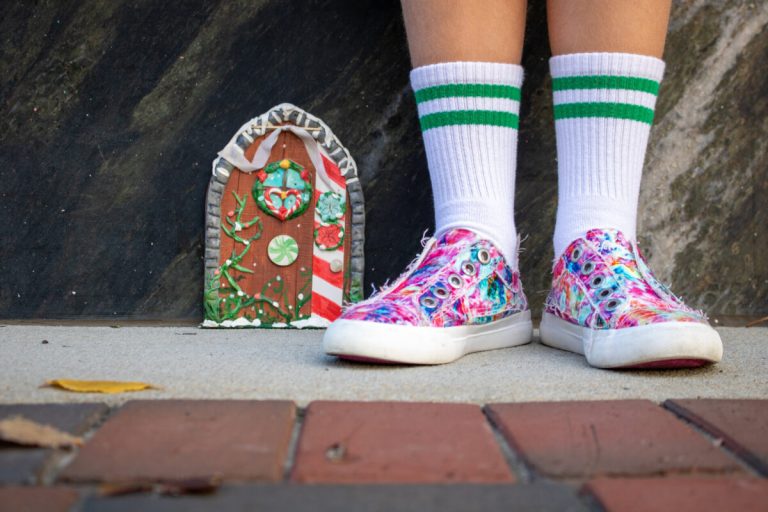SCRUM! 3 Innovators Learn How To Do More In Less Time
Reading time: 6 minutes
Sponsored

When I first saw friends posting about Scrum Master/Product Owner certifications, I had no idea what they were talking about. Curious, I reached out to Chris Sims of Birmingham-based Sigao Studios, who hosts training sessions on this very subject and helped fill in the gaps for me. Here’s what I discovered and how it can help your stress levels go way down.
Defining Scrum
According to Sims, “Scrum helps you build teams that get twice the work done in half the time.”
Scrum is a way to organize teams and work more efficiently and effectively. It originated in software development, but since I’m not a software developer, I really wanted to hear from people using it in other arenas.
Sigao’s Haley Blackburn was kind enough to put me in touch with three of their Birmingham alums who took a Scrum class: Julia Pasker of Pack Health, Ethan Summers of Fledging, and Kellie Clark of Innovation Depot.
3 local alums of Sigao’s classes

Julia Pasker was working in operations at Windy City Paws, a dog walking company for busy professionals. A few months after taking Sigao Studio’s Scrum bootcamp in October 2020, she transitioned into a new position as a productivity facilitator at Pack Health. In February 2021, she took the joint Scrum Master/Product Owner class.
Ethan Summers is the CEO of Fledging, a Birmingham-based premium electronics startup. Before he and four other people on his team took the joint Scrum Master/Product Owner class in March 2020, he was a bit of a Scrum skeptic.
Even though their class was a week after the pandemic shut everything down, team stress actually decreased. Over time, they were able to launch products two times faster than before.
Kellie Clark, now Director of Programs at Innovation Depot, attended the Scrum Master/Product owner training in January 2020, along with her husband. While Scrum was a way of life at her previous place of employment, both Clark and her husband found a new application for it closer to home when the pandemic hit.
Bham Now: what was the Scrum Master/Product Owner class like?

Summers: Our session was the first one that Sigao did during quarantine. The city shut down on March 13, 2020, and we rolled into the class that next week. Everyone was figuring out Zoom for the first time. It really showed off Sigao’s ability to pivot and use the Scrum toolbox to get the job done.
Pasker: By the time I took the class in February 2021, Sigao had already had plenty of opportunities to perfect remote teaching. A lot of what they did in the learning environment was very similar to in-person, physical group meetings. We were able to interact and engage, which was helpful for me because I’m a learn-by-doing kind of person.
Bham Now: what changed for you as a result of the class?

Pasker: The five core Scrum values of commitment, focus, openness, respect, and courage are key for a group to be able to work together as a team instead of being focused only on individual success.
It’s not just about one person doing their work—it’s about the team moving towards a goal together, and how they can best support each other. What do they need—information-wise, communication-wise and process-wise—to do their best work?
Summers: We started putting a lot of things on two backlogs (basically a to-do list): product and project. Then we started thinking in terms of two and four week periods, instead of running a perpetual backlog of projects.
Team stress went down pretty quickly, even as we were adjusting to Covid. We started saying “yes, we have years of work to do, but really, let’s just focus on two weeks, and then after that, we’ll focus on the next two weeks.”
Our product development process was taking us 12 to 15 months. This was a long time, which in consumer electronics is fatal. It went down to about six to eight months, and we’re still working on improving that.
Clark: My husband and I took the class together. We have two children under the age of six, we have extended family responsibilities and we’re trying to have a social life. There are so many moving pieces.
Scrum helped us see who was responsible for what, how much work we were getting done and what we were spending our time on. We created a common bond, with weekly sprint planning sessions and daily Scrums.
Then we had weekly retrospectives where we’d look back on everything we did or didn’t accomplish, see where we needed to adjust, and we’d repeat it all over again. It was very helpful for us. Now we do all of that on autopilot.
Bham Now: what else do you want people to know who may be curious?

Pasker: Everyone I’ve ever met at Sigao is interested in creating a supportive community and the success of anyone who takes their classes—both in terms of professional development and making sure they have the help they need. They have an alumni discussion group, continuing ed webinars, and they reach out about different opportunities.
They also partner with groups like NCWIT to offer scholarships.
Summers: Even though the scholarships that allowed my team to do the training are gone, I’m willing to spend the money on having more team members trained on it—it was that valuable.
Clark: Should people who are non-technical take Scrum? Absolutely.
I really think that Scrum can be implemented in any organization in some way, and definitely in our individual personal lives.
From a training perspective, Chris Sims is one of the best. Whether you take Sigao’s class in person or virtually, you still get the same quality instruction and content. He is by far one of the best virtual instructors I’ve ever met.
Sponsored by:




